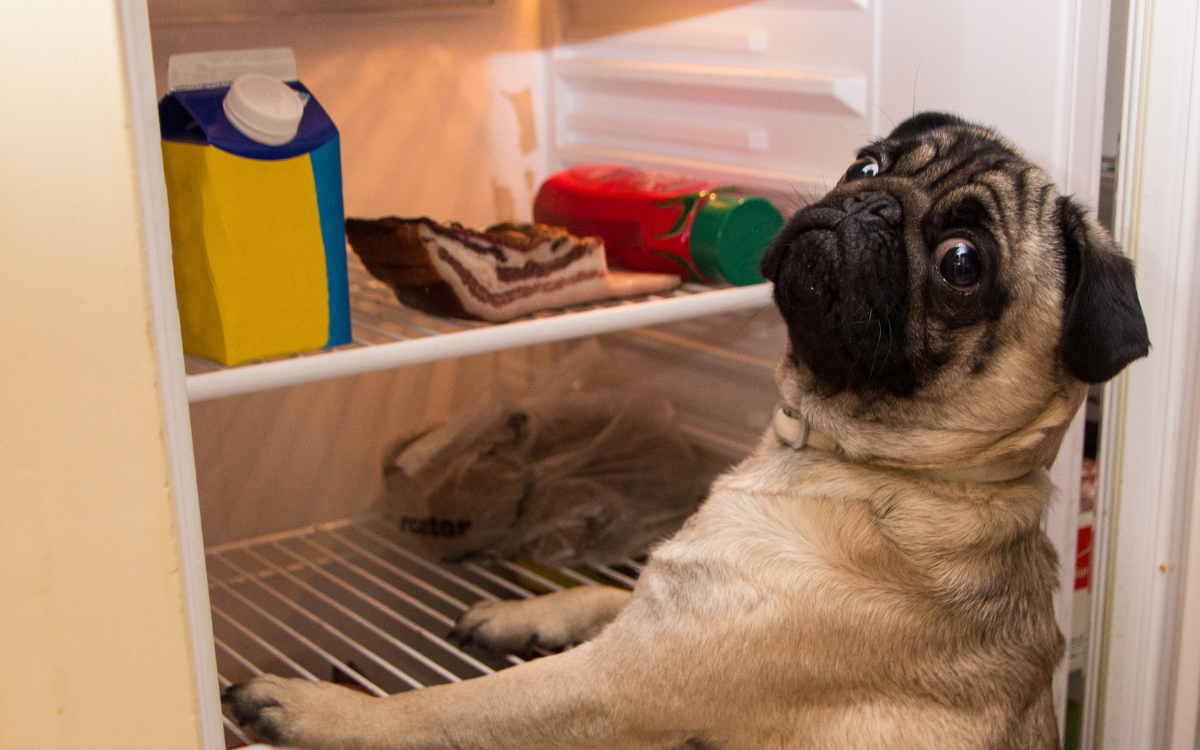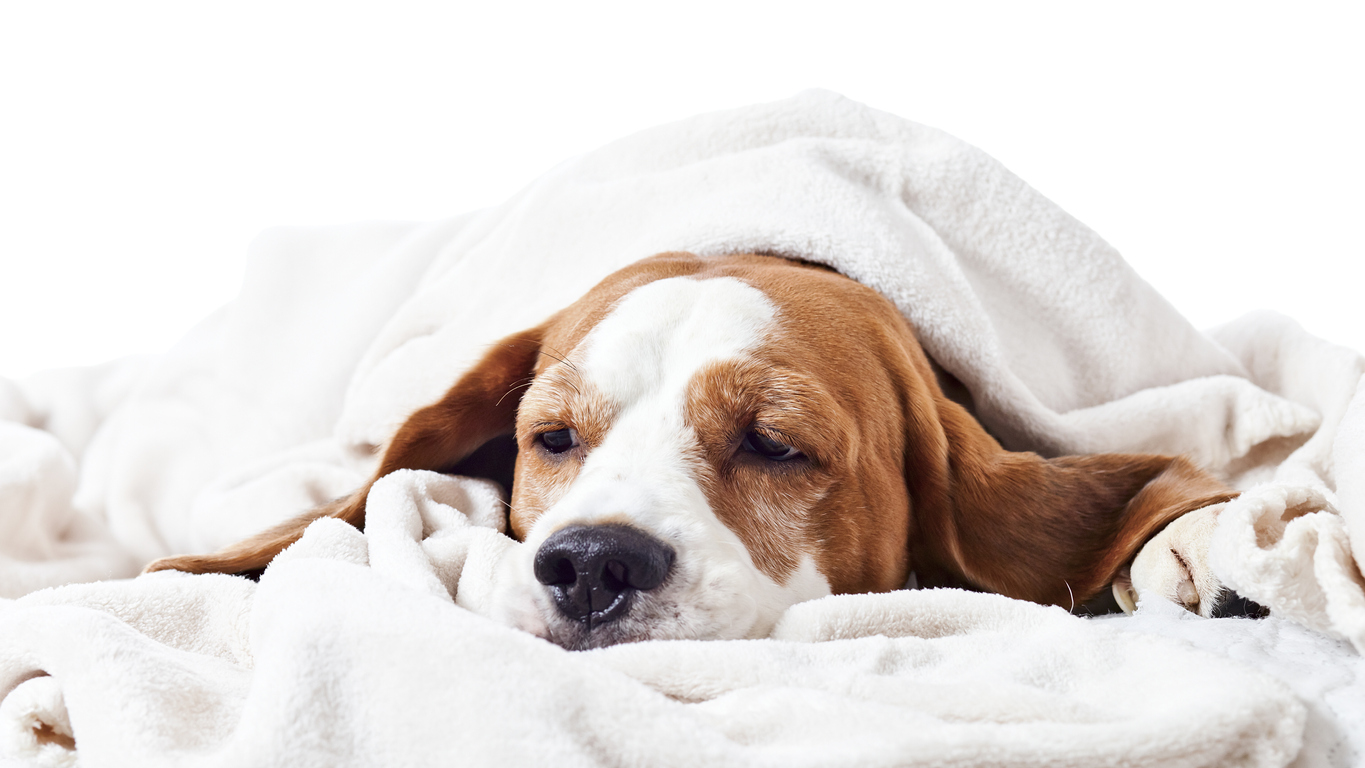For Pups With Short Attention Spans…
Fleas are parasites that live can live on the skin of your dog, feeding on blood and laying eggs, and ultimately causing your pup a lot of discomfort and itching. Luckily there are many treatments for fleas including topical and oral medications, as well as special collars. The key is consistency to make sure the fleas are dealt with and don’t come back. If you have had a flea infestation, you should also launder all fabrics and steam furniture to get rid of infestation sites, as well as make sure to keep your dog on a monthly flea preventative going forward
Worried your dog’s scritch-scritch-scritching is going beyond a regular itch, and might be the signs of a flea infestation? While a house full of fleas is no doubt any dog parent’s nightmare, there’s plenty you can do to prevent or treat them before they take full control of your home!


What Are Fleas?
Fleas are small external parasites known for their ability to leap large distances and their ability to cause instant itching at the mention of them. In the United States, dogs are most commonly infested by ctenocephalides felis (the “cat flea”), but can be infested by multiple other types of flea1.
Fleas follow a general life cycle. The adults live on the dog, eating blood meals and laying eggs on the hair shafts. Yuck! As the dog moves around, the eggs fall off into the environment. Larvae hatch from the egg and develop in the environment until spinning a cocoon-like structure around themself for the pupae phase. They can stay protected in the “cocoon” until there is an ideal temperature and humidity for development, as long as a year. Once emerging as an adult, the flea quickly finds a host to feed on, and the cycle starts again1.
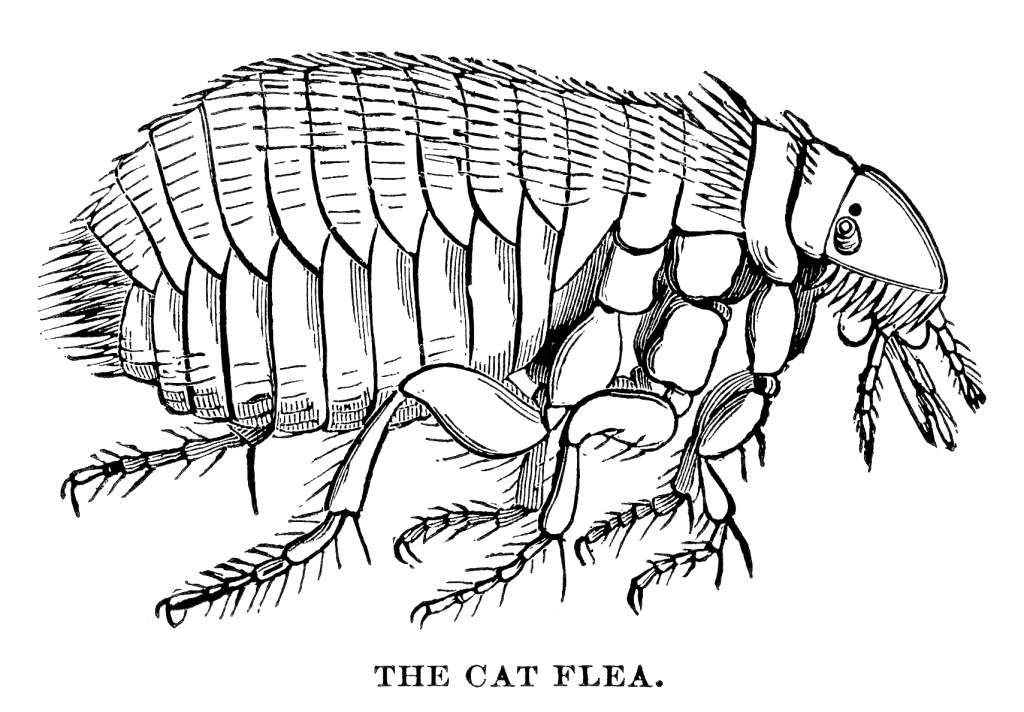

How Do Dogs Get Fleas?
It may surprise you, but dogs do not usually get fleas from contact with another dog that has fleas1. Dogs get fleas from an infested environment. Once a flea is on a host, they are unlikely to switch hosts. Is it possible? Sure, but once a flea is on the all-you-can-eat buffet that is your sweet pup, they don’t look for alternatives. Fleas typically will only seek out a new host if their current one is severely infested and has lost a significant amount of blood.
What Does A Flea Infestation Look Like In Dogs?
While it is possible to see these microscopic bugs jumping around your dog or crawling through their fur, that is also very uncommon. Severe itching, hair loss, and flea dirt are the most common signs of an infestation. “Flea dirt” is another term for flea feces, and looks like coffee grounds on the skin of your pet.
Flea dirt can be hard to distinguish from dirt or other grit. If you want to test, comb some of the grounds onto a clean wet paper towel. After collecting a decent sample, let it sit for a couple of minutes and then smush with a popsicle stick. If you notice a red tint on the paper towel, then there is a good chance your pet has fleas.
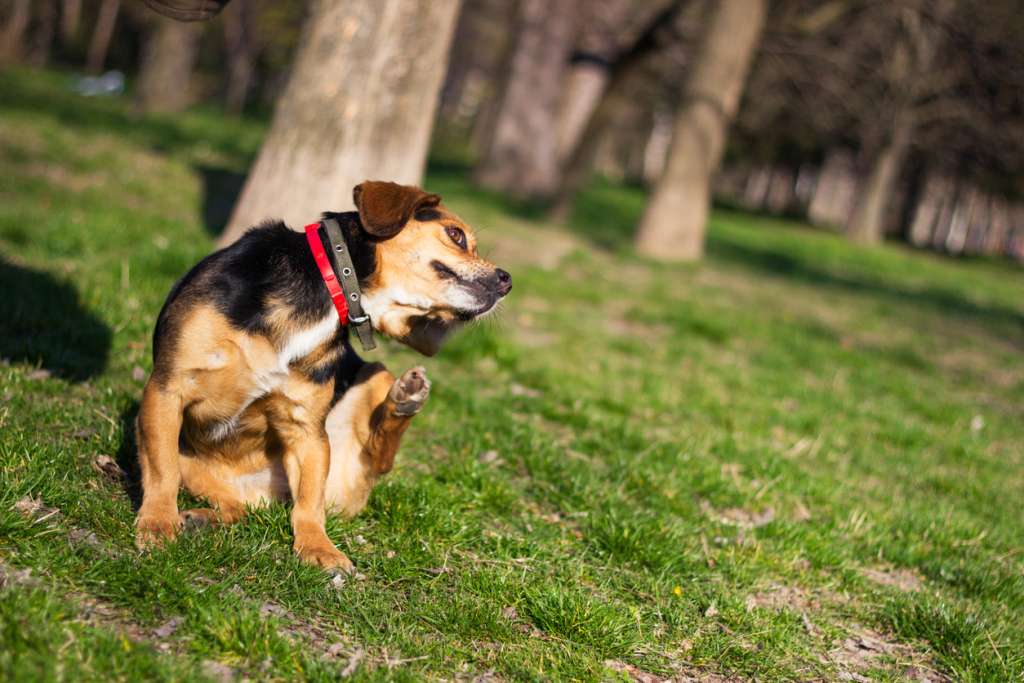

The itching from fleas can be very intense, and in some cases keep you and the pet awake more than normal. Many dogs have an allergic reaction to flea saliva, which causes intense itching and skin irritation and infection. In small or young animals with heavy flea burden, lethargy, weakness, and even death from blood loss can be seen. If you have a small or frail dog and have any suspicion of fleas, get them treated promptly1.
Okay, I’m Confident My Dog Has Fleas. Now What?
First things first, get your pet on the schedule with your veterinarian. They will help you treat your dog and prevent reoccurance. Dogs are treated with products that kill the adult fleas and prevent the maturation of immature flea stages into adults.
Regardless of your pets temperament, preferences, and health concerns, there are many available options. They come in topical products, collars, and oral medications. If your dog has an allergic reaction to fleas, your veterinarian will also direct you to appropriate treatment for the allergic reaction.
The trick here is using it long enough and consistently enough. Fleas are gross! Most people are great about the treatments initially, but once the evidence is gone and time has passed, consistency is hard. So it’s important to stay vigilant with treatment. As we discussed, they can be “cocooned” in the environment for up to a year in some cases.
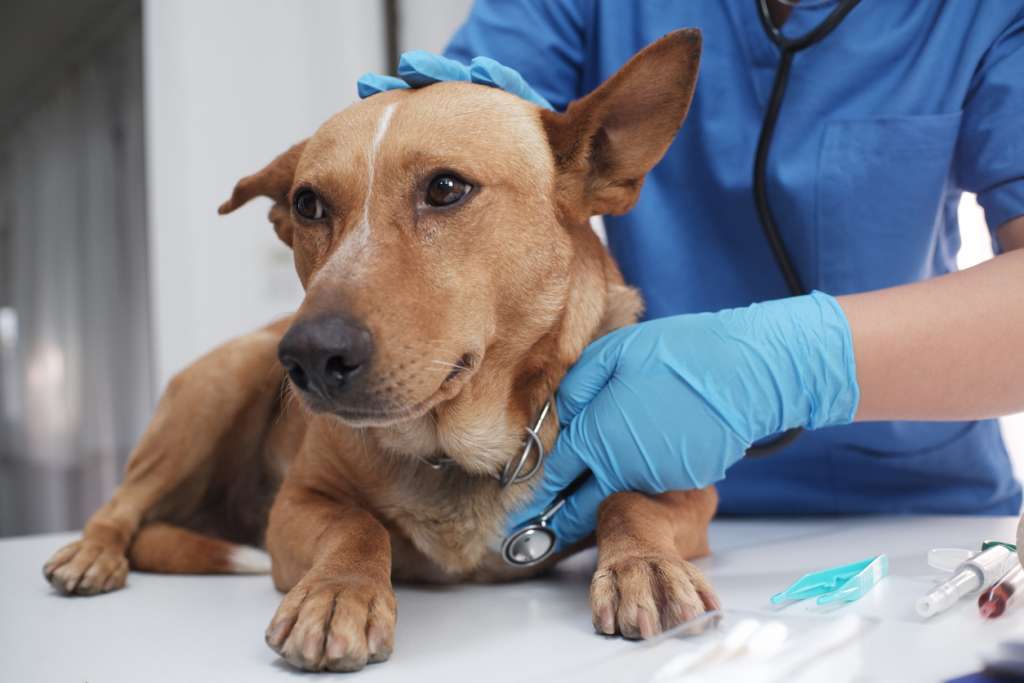

Now that your dog has appropriate treatment, you can turn your attention to tackling the environment. If you have adult fleas on your dog, I’m sorry to say that means you have eggs, larva and pupae in your environment. You’ll have to prevent those from growing up and restarting the problem.
All bedding that your dog regularly lays on should be laundered or replaced. Steam all upholstered furniture and vacuum regularly. Ideally, vacuum daily. Pro tip: dispose of the vacuum bag, or the fleas can simply develop in the bag and crawl out. Keep your lawn trimmed short and all debris removed to help reduce fleas in the yard as well. If your environment is heavily infested, or if your environment is ideal for fleas, you may choose to have your house and yard professionally mitigated1.
How Do I Prevent My Dog From Getting Fleas?
Keep your dog, and all other pets in the house, on an appropriate monthly preventative all year round. This, combined with routine environmental cleaning and management (see above), can prevent flea infestation in your household. Dogs with flea allergy are very sensitive to even low flea burden, which makes prevention even more important for their comfort.
My Vet Said It’s Possible For Fleas To Carry Other Diseases. What Are They?
Fleas can carry tapeworms, and be vectors for Yersinia pestis (plague), Rickettsia spp., Bartonella spp., Mycoplasma spp., and Leishmaniasis spp1. This is one of the many reasons to promptly treat your dog for fleas and maintain prevention. If your routine preventative medication does not already cover tapeworms (some flea and tick or heartworm products cover tapeworms), your veterinarian may recommend adding a medication that does when fleas are diagnosed.


Can I Get Fleas From My Dog?
While fleas that typically affect dogs prefer dogs and cats, they can bite humans and cause skin irritation and transmit other diseases1. If you notice skin irritation or any other changes to your health, seek medical care from your provider. Humans are also susceptible to getting tapeworms from exposure to fleas. Again, if you have any concerns about your health, seek care from your provider promptly.
Colleen Ferriman, DVM, is a canine and feline health, wellness, and illness management advocate. She has a combined 10 years of experience in clinical medicine, education, and educational content development. Colleen graduated from Colorado State University as a Doctor of Veterinary Medicine, has worked as a general practitioner, and has contributed to the development of veterinary educational tools. She is also a member of the American Veterinary Medical Association and American Academy of Veterinary Pharmacology and Therapeutics.
Sources
1 White, A. “Fleas (Zoonotic) (Canine).” VINcyclopedia of Diseases 2022. https://www.vin.com/doc/?id=4953217&pid=607



